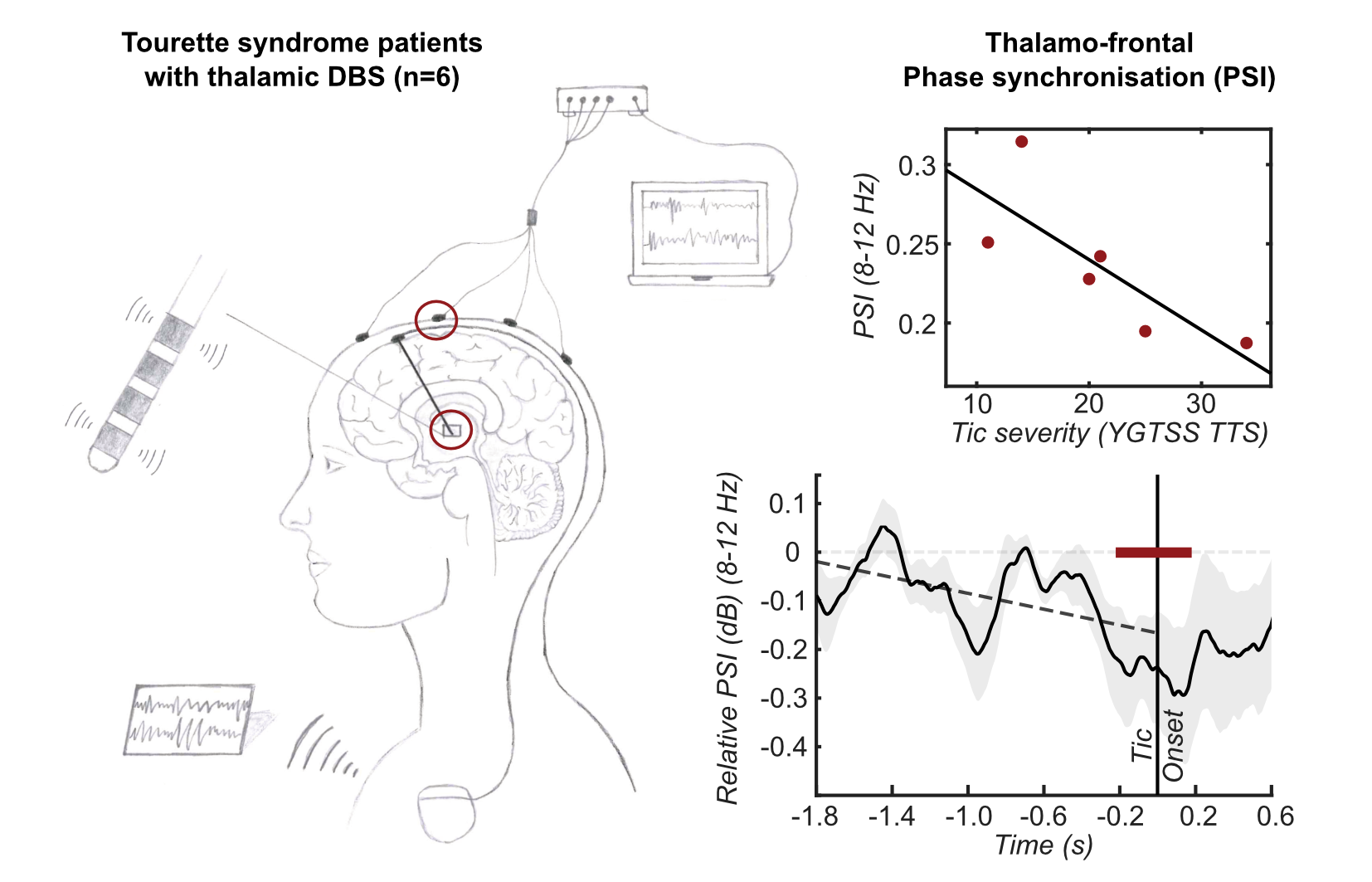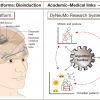Thalamo-frontal functional connectivity patterns in Tourette Syndrome: Insights from combined intracranial DBS and EEG recordings.
Tourette Syndrome is a condition that causes people to make sudden movements or sounds, called tics. In this study, we looked at how brain regions communicate in people with Tourette Syndrome. We found unique patterns between the thalamus and cortex linked to symptom severity and tic onset—patterns not seen by looking at brain activity in these regions alone. These insights may help develop more personalised brain stimulation treatments for Tourette Syndrome.
Thalamic deep brain stimulation (DBS) has shown clinical improvement for patients with treatment-refractory Tourette Syndrome (TS). Advancing DBS for TS requires identifying reliable electrophysiological markers. Recognising TS as a network disorder, we investigated thalamo-cortical oscillatory connectivity by combining local field potential (LFP) recordings from the DBS thalamic target region using the Percept PC neurostimulator with high-density EEG in eight male TS patients (aged 27-38) while stimulation was off. We identified a spatially and spectrally distinct oscillatory network connecting the medial thalamus and frontal regions in the alpha band (8-12 Hz), with functional connectivity strength negatively correlated with TS symptom severity. Moreover, reduced thalamo-frontal alpha functional connectivity before tic onset, localised in sensorimotor regions and the inferior parietal cortex, suggests its direct role in tic generation. Importantly, associations with symptoms and pre-tic dynamics were specific to functional connectivity patterns and not evident in the pure power spectra. These findings underscore the importance of investigating electrophysiological oscillatory connectivity to characterise pathological network connections in TS, potentially guiding stimulation-based interventions and future research on closed-loop DBS for TS.

2025. Mol Psychiatry (e-Pub ahead of print).
2024. J Neurol Neurosurg Psychiatry, 95(12):1112-1122.
2025. Brain, 148(6):2093-2107.
2025. Mov Disord, 40(3):456-467.
